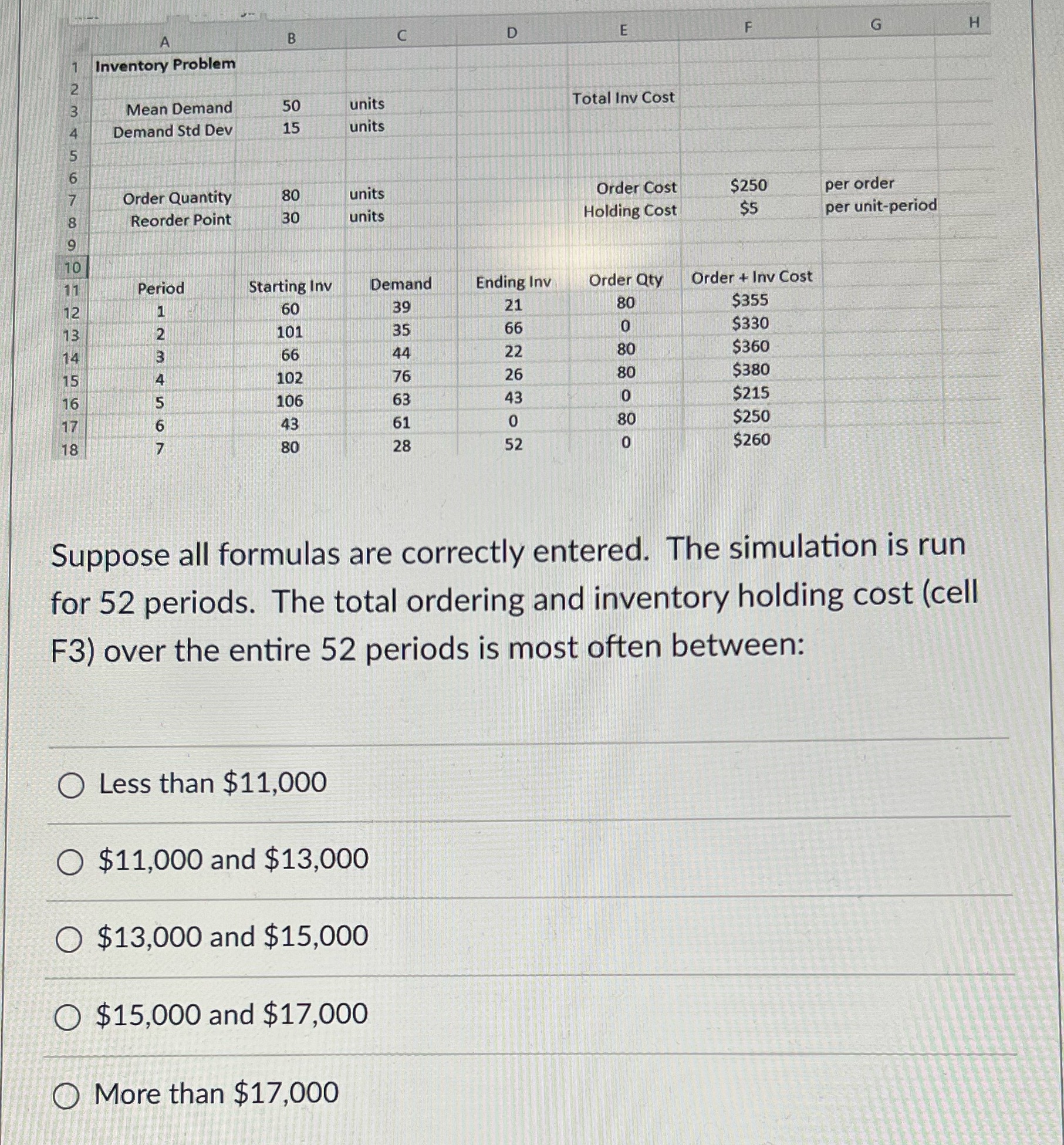Question
To simulate inventory management for a particular product, assume that the per period demand is an integer value quantity which follows the normal distribution with
To simulate inventory management for a particular product, assume that the per period demand is an integer value quantity which follows the normal distribution with mean and standard deviation 50 and 15, respectively. If the demand exceeds the starting inventory, then the ending inventory would be zero, that is, the "extra" demand is lost. Therefore, the ending inventory level is never negative. Ordering will take place at the end of the period, based on the ending inventory, and the order arrives at the beginning of the next period. The ordering policy is to order 80 units (order quantity is equal to 80 units) when the ending inventory is less than or equal to 30 units (reorder point is 30 units). The cost of placing each inventory order is fixed at $250, and this value does not depend on the quantity ordered. The cost of holding inventory for each period is $5 per unit (holding cost is $5/unit-period). The per period inventory holding cost is computed based on the end of period inventory level.The starting inventory for each period, after the first period, is the ending inventory plus any order quantity from the period before.

Step by Step Solution
There are 3 Steps involved in it
Step: 1

Get Instant Access to Expert-Tailored Solutions
See step-by-step solutions with expert insights and AI powered tools for academic success
Step: 2

Step: 3

Ace Your Homework with AI
Get the answers you need in no time with our AI-driven, step-by-step assistance
Get Started


